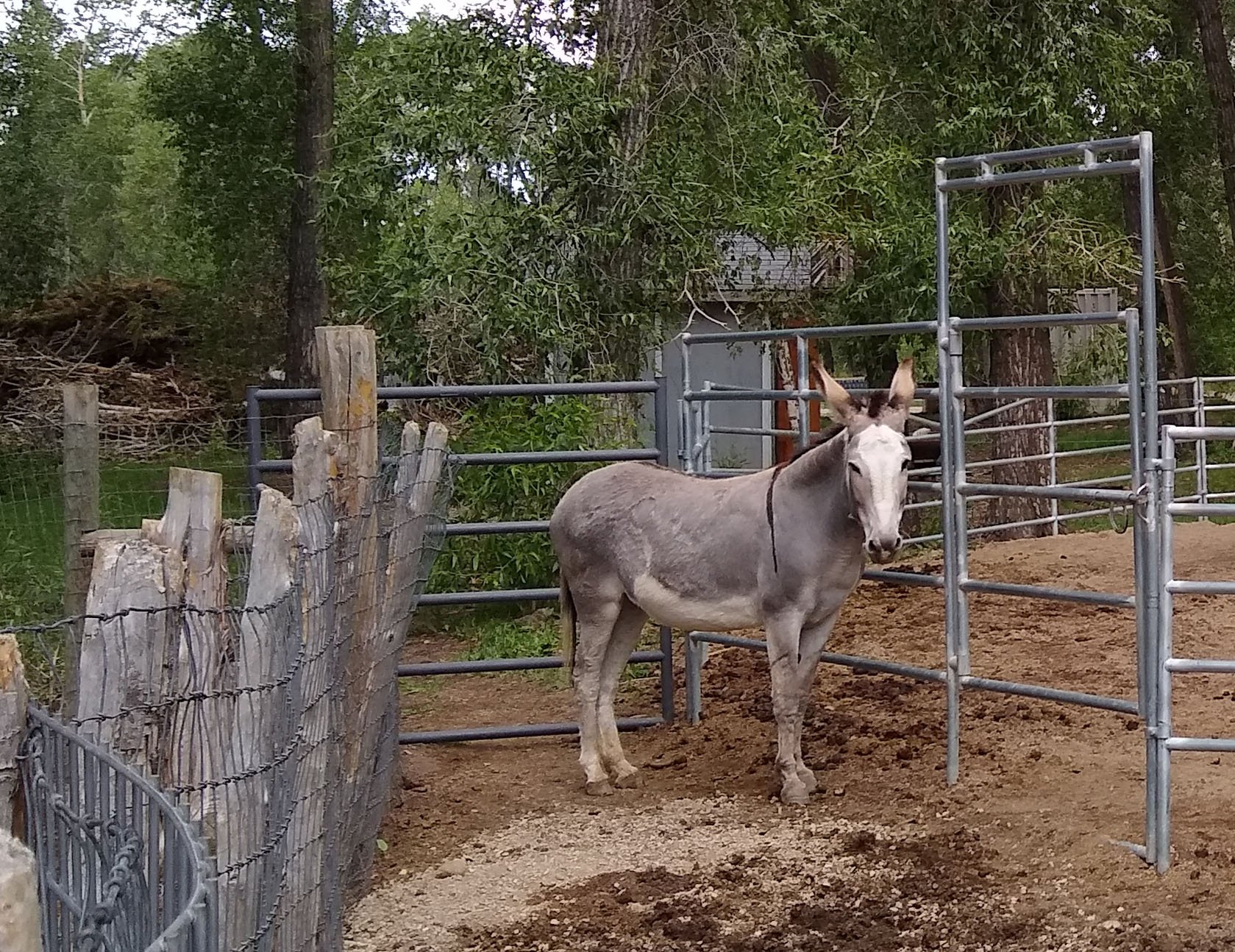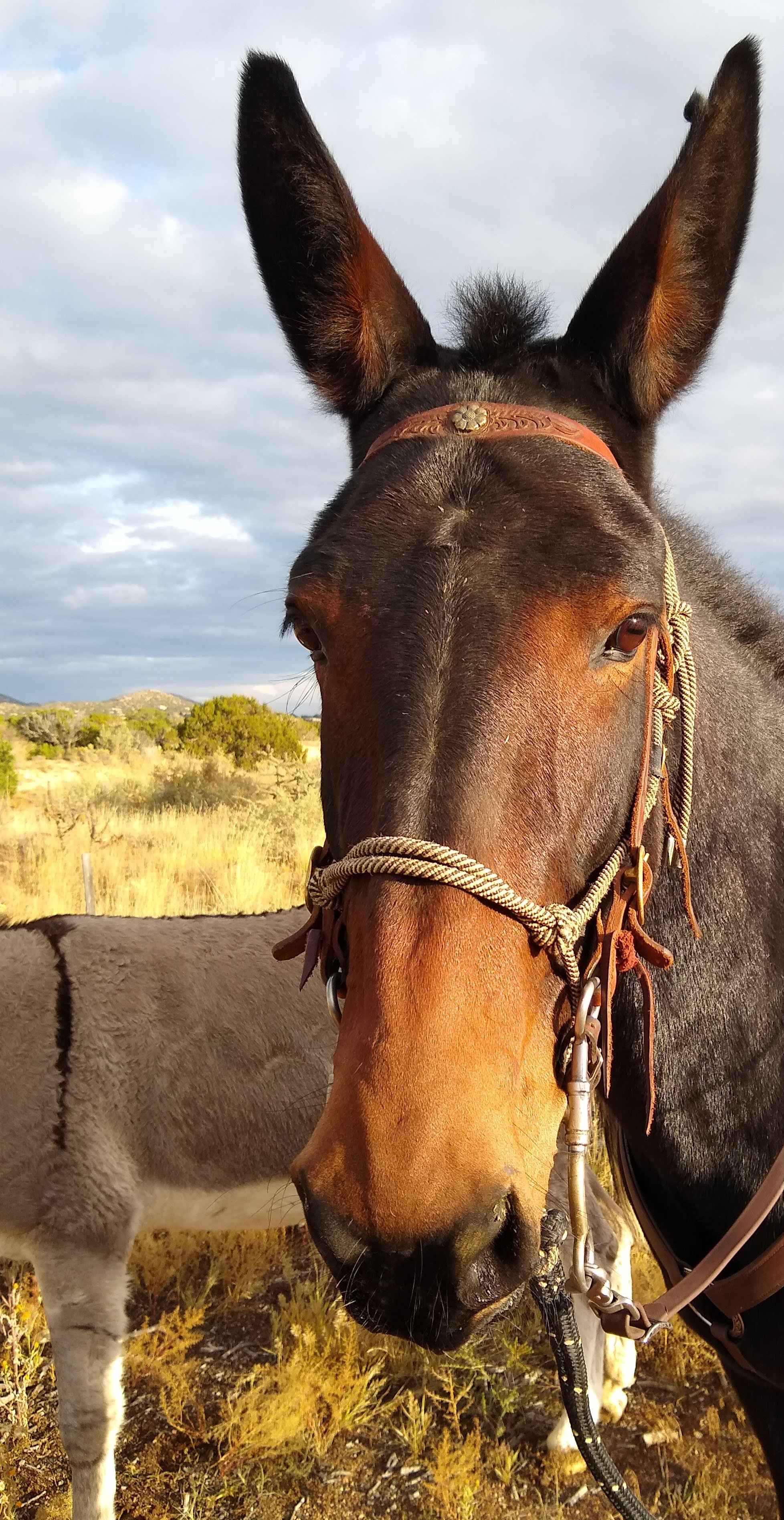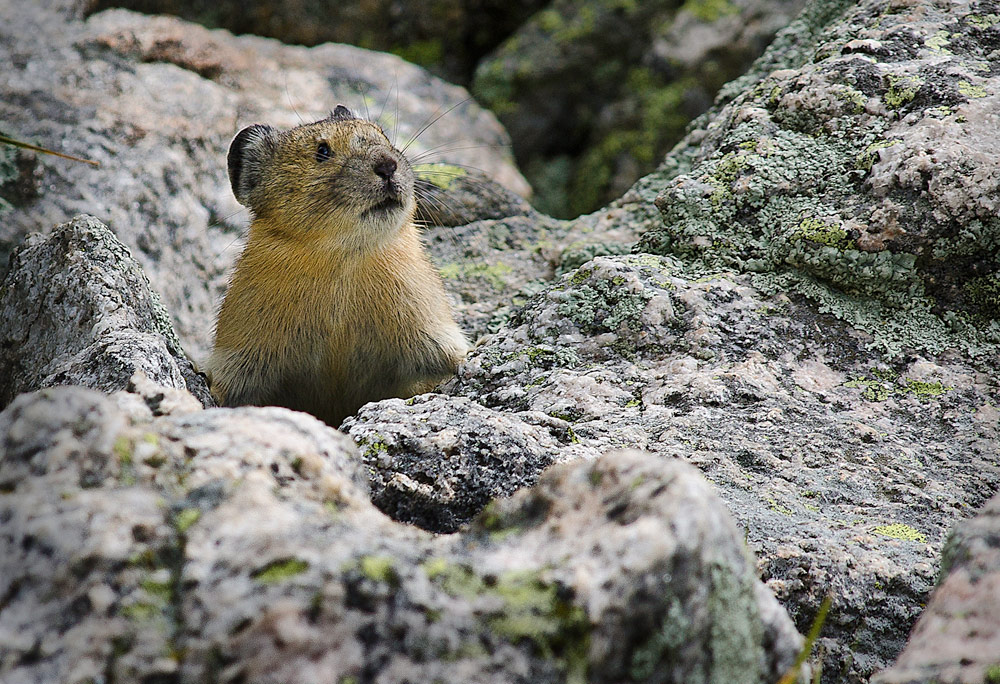Monitoring Climate and Pika in the Southern Rockies
Late fall 2022 Update
Follow up data collection for this program had been postponed for several years due to fire danger, forest closures, and staff health issues. 2022 looked like the year to get back into the Pecos Wilderness for data collection - until the Calf Canyon-Hermit Peak fire erupted in May. Turning out to be the largest fire in New Mexico history and followed by lengthy closures for dangerous flash floods and debris flows, it blew all of our 2022 plans out the window.
But not knowing that the program was going to be postponed - yet again - meant that we did fully prepped and chomping at the bit all summer. The upside is we have the opportunity to go into the 2023 field season extremely well-prepared. Prepared for almost anything, except another horrific fire. As part of our prep, we added two new members to our team: Pearl and Poptart, a mule and donkey, respectively, who will carry equipment and supplies into the Pecos Wilderness. Pack animals enable us to cover more ground, get out safely in the event of an emergency, and generally be more efficient in the rugged conditions of the Pecos Wilderness.
in 2023 we will be hitting the trail and trying again.
Why Pika? Why the Southern Rockies?
If you are a hiker who visits the highest peaks of the West, you may have spotted pikas among the talus fields or heard their "eek" alarm call. Pikas look like small rabbits and are sometimes described as "terminally cute." The American pika lives among the most stunning scenery and most harsh conditions of North America - typically on mountains above 8000 feet elevation - from California to New Mexico and north into Canada.
Like polar bears, pikas gained attention as early indicators of the effects of climate change on wildlife. In the case of pikas it is not sea ice that they require, but mountain peaks that are cool in summer and have a blanket of insulating snow in winter - both of which are being altered by climate change.
The pika was recently proposed for inclusion on the list of endangered species, but the US Fish and Wildlife Service determined that endangered status is not warranted at this time. Why? Because the scientific information about pikas is not yet clear. Pikas seem to be disappearing from some mountainous areas, but not from others. And in a few places, pikas confound conventional knowledge - they are found at low elevations and do well in the warmer temperatures.
Working with a network of agencies and citizen science pika monitoring projects around the West, this Climate and Pika Monitoring Project will help to clarify the effects of climate change on pikas. It will collect information that will be used by the US Fish and Wildlife Service, researchers, and other wildlife managers to evaluate the range-wide status of pika and make informed management decisions so that pikas continue to thrive.
Information about the pika population from the mountains of New Mexico is important as a indicator of how climate changes are affecting other species. Since New Mexico is the southern-most extension of the Rocky Mountains, it would be expected that climate changes might be visible here earliest.
The project began as a citizen science project in the Pecos Wilderness, but sadly, this very challenging project turned out to be too challenging for volunteers. Use of citizen scientists was discontinued after 2012. Dangerous conditions from extreme drought, forest fires, and flash floods precluded data collection in 2013. In 2014, data collection resumed using professional biological technicians and Institute staff and a full set of baseline data was finally obtained.
American pika
About the Project
This is a long-term project, intended to examine changes over time in the pika abundance of the Pecos Wilderness and possible drivers of change.
With the completion of the 2014 effort, we now have baseline data on the pika population in the Pecos Wilderness. Of the 104 sites surveyed, 57 were occupied by pika and 47 were not. The lowest stratum, stratum 1, had 12 occupied sites, while each of the higher three strata had 15 occupied sites.
But baseline data collection was only the first step. No previous data set exists on the abundance of pika so we can’t make comparisons or say that the population is stable, increasing or declining—yet. That was, in fact, the point of obtaining this baseline data. Now that we know what proportion of sites were occupied in 2014, we can compare the proportions in future years and determine whether the pika population is changing. Changes in a particular stratum will indicate whether it is changing at any particular elevation more than the others. This will help to determine whether changes in precipitation amount or form (for example rain instead of snow), or warming temperatures are affecting the pika.
A repeat of the monitoring of all 104 sites will occur at 5 and 10 year intervals. Adjustments to this schedule will be made in the event of fires, floods or other conditions unsafe for surveyors.
In the meantime, it appears that pika are still plentiful and well-distributed throughout the expected range in the Pecos Wilderness. Vernon Bailey, a naturalist who worked extensively in New Mexico in the early 1900’s, described pika as found only at 3300 meters and up in the Sangre de Cristo Mountains. They are still present at or near this elevation.
Project Goals
Advance the long-term survival of the American pika in the wild, with a focus on the Southern Rockies of New Mexico.
Increase understanding of climate change effects in the Southern Rockies.
Summary of Impact to Date
Development of the first maps of potential pika habitat in the Pecos Wilderness of New Mexico, created through photo interpretation.
Development of training materials, field manual, safety protocols.
Identification of 400 randomly selected off-trail survey sites.
Development of route guides to navigate to these sites.
Trained 22 citizen scientists and 2 biological technicians in survey methods.
Several years of exceptional drought in the southwest, resulted in both large forest fires and flash floods, and the need move workers to safety. Conditions finally became safe for field work in 2014 and 100+ sites were fully surveyed. This is now baseline data to track trends in climate and pika distribution over time via repeat surveys at approximate 5 year intervals.
Upcoming Activities
A repeat of the monitoring of all 104 sites should occur at approximately 5 year intervals, so the second set of surveys was due in 2019. But recollection of data was postponed due to unsafe conditions.
We saw lots and lots of pika this weekend!
We took a break on the hike out, ditched our packs and sat and observed at the small talus slope next to the spring on the side of Jicarita Ridge. We watched one build a hay pile. And one pika climbed onto my pack! I wish I had gotten a picture but they're so fast!
Kerry Bushway, citizen scientist
Above: Team of biological technicians collecting data in 2014 - long days, high elevations, lots of miles.
Featured Donor
The Green Sheep Fund…
… because people are the engine of good works.
What a great name for a family charitable fund! Not quite the black sheep, but better, the green sheep.
The Green Sheep Fund will be funding part of our 2022 expedition into the Pecos Wilderness to monitor climate and pika. We are so honored and grateful for their support.
Thank you, Green Sheep Fund.








